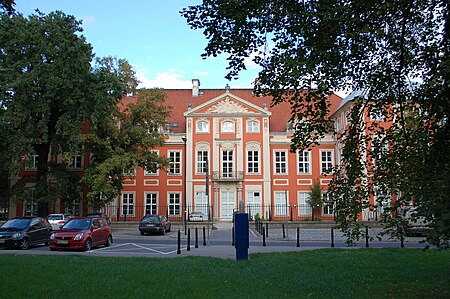Academy of Fine Arts in Warsaw

Academy of Fine Arts in Warsaw (Polish: Akademia Sztuk Pięknych w Warszawie) is a public university of visual arts and applied arts located in the Polish capital. The Academy traces its history back to the Department of Arts founded at the Warsaw University in 1812. As a separate institution it was founded in 1844 during the Partitions of Lithuania-Poland. In an upgrade in 1904 it was named the Warsaw School of Fine Arts; and in 1932 it received recognition as an Academy. At first the institute did not have its own building and classes were held in several locations around the city. Following an architectural competition a design by Alfons Gravier was chosen and construction began in 1911. The building was completed by the outbreak of the First World War.
Excerpt from the Wikipedia article Academy of Fine Arts in Warsaw (License: CC BY-SA 3.0, Authors, Images).Academy of Fine Arts in Warsaw
Krakowskie Przedmieście, Warsaw Śródmieście (Warsaw)
Geographical coordinates (GPS) Address Nearby Places Show on map
Geographical coordinates (GPS)
| Latitude | Longitude |
|---|---|
| N 52.2394481 ° | E 21.0150341 ° |
Address
Pałac Czapskich (Wydział Malarstwa)
Krakowskie Przedmieście 5
00-046 Warsaw, Śródmieście (Warsaw)
Masovian Voivodeship, Poland
Open on Google Maps











